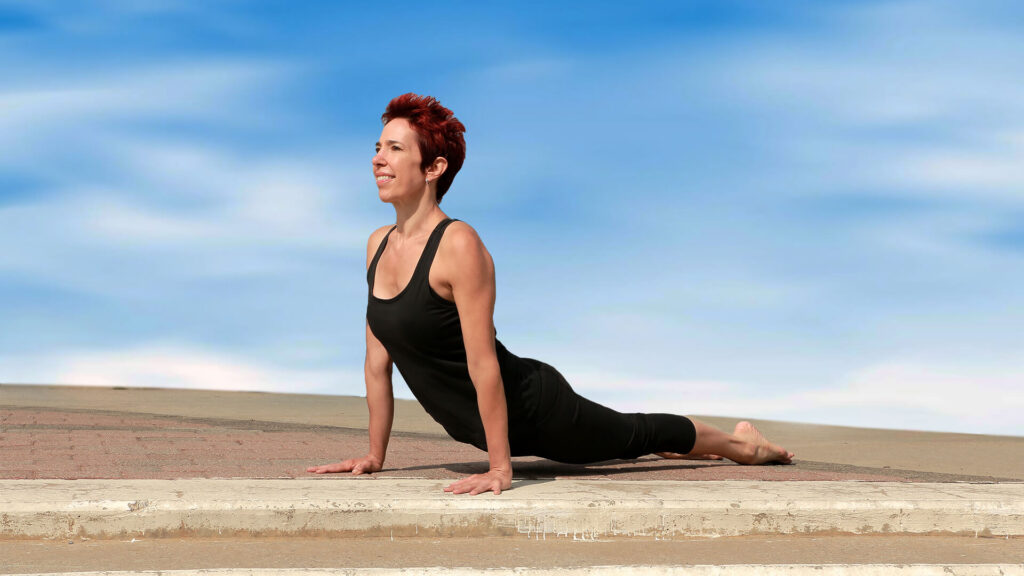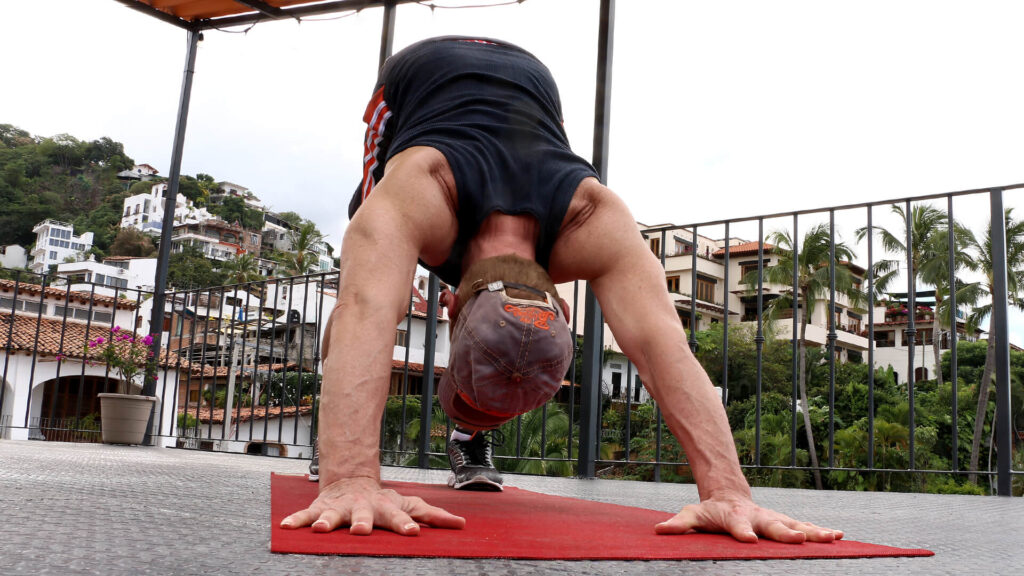
A healthy spine isn’t just about sitting tall. It’s about extension, flexion, and rotation — full-body integration. And Upward Facing Dog delivers.
🔥 Key Benefits for Movers & Athletes:
Promotes spinal mobility – A supple spine moves more efficiently whether you’re tumbling, sprinting, or lifting.
Stretches hip flexors and quads – Balances front and back body strength, improving performance and reducing injury risk.
Strengthens wrists and forearms – Crucial if your sport involves gripping, catching, or swinging.
Opens the rib cage – More space means more oxygen — and that means better stamina and faster recovery.
📏 Upward Facing Dog Alignment Cues That Change the Game
Instead of breezing through Up Dog like a transition pose, slow it down. Feel it. These are the cues I use (and teach) to unlock its full potential:
✅ Pull your shoulders down and away from your ears
✅ Press firmly through your palms
✅ Engage your legs — press the tops of your feet into the floor
✅ Lengthen the back of your neck — gaze forward
✅ Draw your belly in — gently tuck your tailbone to support your lower back
When you follow these cues, you’ll feel less crunched and more lifted.
💪 What Upward Facing Dog Does for Your Body
More than a shape — it’s a tool. Here’s what it unlocks:
Energizes your nervous system
Opens the heart and chest
Boosts circulation and breath control
Strengthens the upper back and spine
Reverses forward-head posture
Stretches the abdominals
Sharpens focus and mental clarity
Helps relieve fatigue and mild depression
🔬 Anatomy Breakdown: The Muscles That Work in Upward Facing Dog
Here’s where it gets interesting:
Most of the lift in Up Dog comes from:
Concentric activation of the spinal extensors in the thoracic spine
Eccentric lengthening of the flexors in the cervical and lumbar spine
And although it looks like we’re just pressing the shoulders down, what’s really happening is the lifting of the rib cage away from the floor.
💡 Major Muscle Groups:
Primary movers:
Pectoralis minor – front of the chest
Lower trapezius – stabilizes scapulae and helps with neck extension
Latissimus dorsi and pectoralis major assist — although they attach to the humerus, not the scapula
Supporting muscles:
Erector spinae (back extensors)
Deltoids and triceps
Quadratus lumborum
Gluteus maximus and medius
Deep core stabilizers
👉 It’s a total-body integration move — when practiced with intention, it strengthens as much as it stretches.
⚠️ A Word of Caution
If you’re dealing with:
A back injury
Carpal tunnel syndrome
Pregnancy, especially beyond the first trimester
…you might want to skip or modify this pose. Listen to your body, and don’t hesitate to use props or opt for alternatives like Sphinx Pose or Low Cobra.
✨ More Than a Transition
Upward Facing Dog is often rushed, skimmed over, or confused with Cobra Pose. But when you take the time to understand its mechanics and feel its full expansion, it transforms into one of the most energizing and balancing postures in your entire practice.
So next time you flow into it — slow down.
Breathe in.
Lift through your chest.
And feel the strength, the stretch, and the potential of your body rising up from the mat.
Check out our blog post for Upward Facing Dog’s best buddy:
> Downward Facing Dog


































